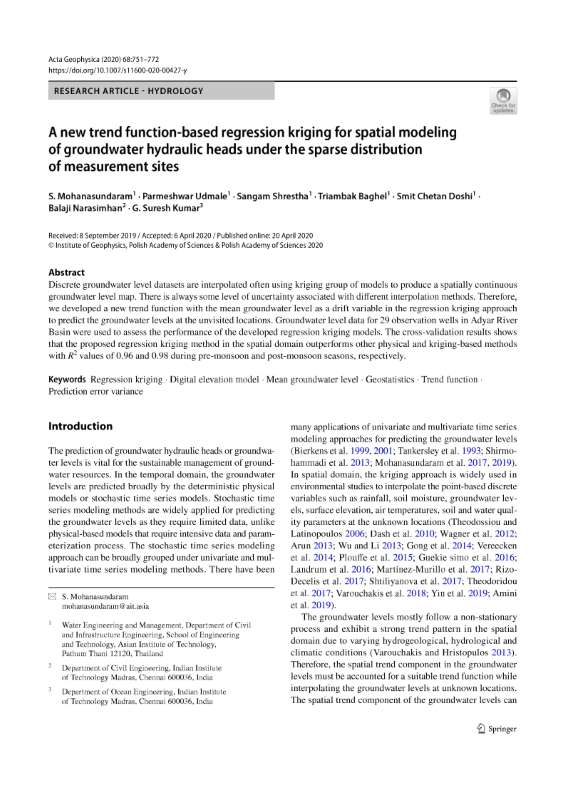Discrete groundwater level datasets are interpolated often using kriging group of models to produce a spatially continuous groundwater level map. There is always some level of uncertainty associated with different interpolation methods. Therefore, we developed a new trend function with the mean groundwater level as a drift variable in the regression kriging approach to predict the groundwater levels at the unvisited locations. Groundwater level data for 29 observation wells in Adyar River Basin were used to assess the performance of the developed regression kriging models. The cross-validation results show that the proposed regression kriging method in the spatial domain outperforms other physical and kriging-based methods with R2 values of 0.96 and 0.98 during pre-monsoon and post-monsoon seasons, respectively.

